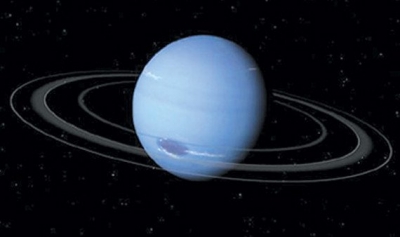
When Uranus, the seventh planet from the Sun, was discovered in 1781, it expanded the known limits of our solar system. It was also the first planet to be discovered using a telescope, as Mercury, Venus, Mars, Jupiter and Saturn were all bright enough to be easily visible to the naked eye.
In fact, because these planets had been known to people for millennia, Uranus was arguably the first planet in recorded history to have been ‘discovered’ at all.
The observations that established Uranus as something other than a regular star were made on 13 March 1781 by Sir William Herschel. He was using a state-of-the-art 2.1-m-long (7-ft) reflecting telescope with a 15.2-cm (6-in) mirror, which he made and installed at his home in Bath, UK. He realized that the point of light known in older star catalogues as “34 Tauri” was in fact something much closer.
He published his findings in a letter to the Royal Society the following month, initially reporting it as a probable comet. Later that year, Anders Johann Lexell (working in St Petersburg, Russia) and Johann Elert Bode (working in Berlin) made follow-up observations that led to the conclusion that the object was in a near-circular orbit, and therefore almost certainly a planet.
Herschel initially suggested calling the new planet Georgium Sidus (George’s Star) after the British King, but unsurprisingly this was not a popular choice internationally. Most astronomers called the planet “Herschel” until 1782, when Bode suggested naming the planet after Ouranos, the Greek god of the sky. The name was quickly accepted, although the British government’s Nautical Almanac insisted on referring to the planet as Georgium Sidus until 1850.
Credit : Science Museum
Picture Credit : Google




